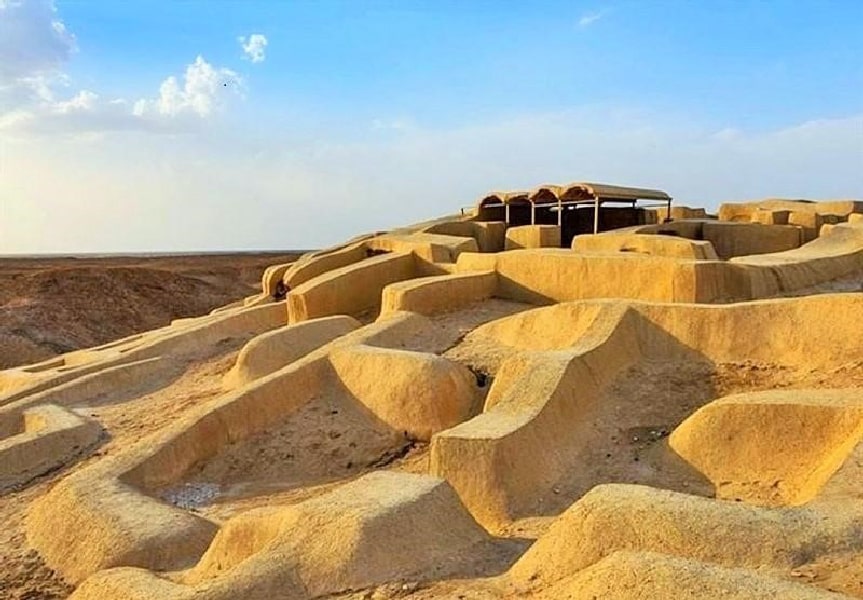
Shahr-i Sokhta (Burnt City) in Zabul is an archaeological site with an area of over 150 hectares. The burnt city, also spelled Shahr-e Sukhte, is made of mud bricks and is one of the world-famous Zabul tourist attractions. This historical site, a registered Iranian UNESCO World Heritage Site, is located in the fertile alluvium of the Hirmand river bank, between the cities of Zahedan and Zabul, in Sistan and Baluchestan province in the southeast of Iran. This historic site dates back to the Bronze Age and was populated from 3200 to 2200 BCE.
Humans inhabited this city in four historic periods of civilization. Before this city was abandoned, it went through three fires in which many of its population lost their lives. For this reason, there is a cemetery next to this historic site that contains 25,000 to 40,000 graves.
The city was initially a small and sparsely populated village that expanded with the arrival of immigrants and the settlement of different tribes. At the peak of its prosperity, it had a population of about 5,000 to 8,000 and spanned an area of about 162 hectares. Therefore, it is considered one of the most populated cities of the Bronze Age.
This historical area consists of several hills in a row. Each of these historical hills has been a part of the city with a special use: the industrial area with workshops, the monument area, the cemetery, and the residential area. The special design and division of different areas from the residential section shows the advanced urbanization method in Shahr-i Sokhta. The materials used in the construction of houses were mostly clay-stack, adobe, wood, and wicker.
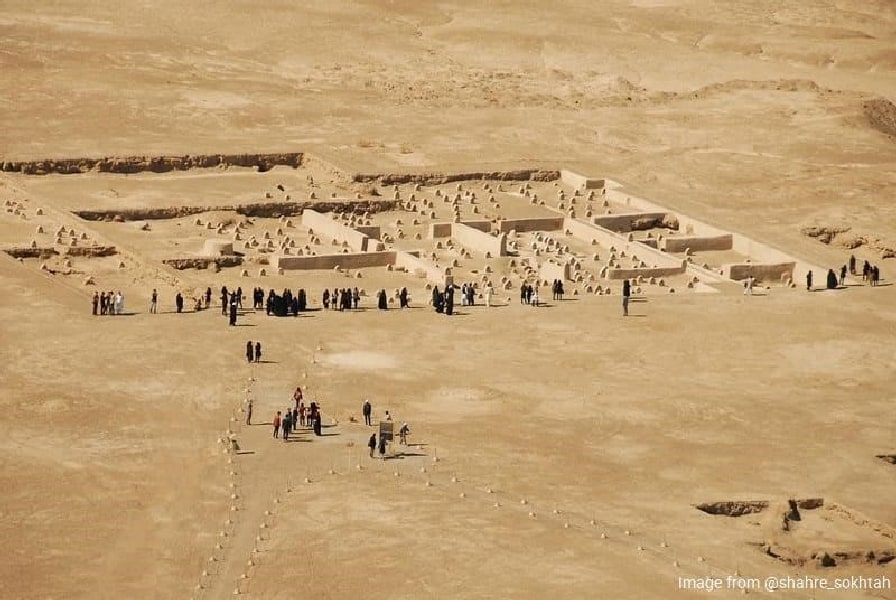
Historical Mentions of Shahr-i Sokhta
Shahr-i Sokhta was first mentioned by Colonel Sir Charles Edward Yate, a British political agent and later Consul General in the Qajar period. He used the name “Burnt City” in his travel book “Khurasan and Sistan” after visiting this area. He considered this name appropriate because of the layer of ash that covered the city.
The main archaeological excavation in Shahr-i Sokhta was carried out by the Italian archaeologist Maurizio Tozzi. He started working on this ancient site in 1959. After a long break, an Iranian group headed by Dr. Seyed Mansour Seyed Sajjadi, one of Tozzi’s students, resumed the exploration of the burnt city in 1997.
Tozzi believed that the settlement in this area dates back to 8 thousand years BCE, but the evidence found in this area only confirms the age of 3200 BCE. Since the Burnt City is considered a turning point in Bronze Age civilizations with considerable archeological records, it has high potential for archaeological research. These studies are still ongoing to decipher the unknown mysteries of this magnificent ancient civilization.
Why is it Called Shahr-i Sokhta?
There is no information about the original name of this city. The ruins of Shahr-i Sokhta (Burnt City) were covered with a thick and widespread layer of ash, which made the British Colonel Yate call this area the burnt city. Currently, many experts and historians reject the hypothesis of a fire in this city. Their speculations suggest two reasons for the thick layer of ash:
- The boom of industrial activity in this area in the following periods and the offload of ash from industrial furnaces on the soil of this area
- The temporary settlement of nomadic tribes in this area and making fire over the ruins of the burnt city.
The Archaeological Value of Shahr-i Sokhta
There is no doubt that the archeological value of this settlement is in the artifacts discovered in the ruins of Shahr-i Sokhta. Many artifacts in relatively good condition have been discovered in this area. These unique findings show the fascinating culture of the eastern part of the Iranian plateau during the Bronze Age.
In the following, we present a list of discovered artifacts and wonders of the Burnt City based on the data from the Miras Aria website and Wikipedia:
- The skull of a 13-year-old girl with traces of brain surgery practice. She probably died due to the disease that was diagnosed
- A pottery goblet, painted with frames of a running goat in different positions, and when we rotate this goblet, we see the world’s first example of illustrated animation
- Dice and backgammon, older samples have been discovered elsewhere in the world, show that people used to play this game in the past
- An artificial eye, the first example of its kind, made of a thin layer of gold on a light material, likely bitumen paste
- A precise 10 cm ruler that shows the population’s grasp on mathematics and geometry
- Beautiful patterns on leather pieces along with other fabrics, each painted with several colors
- A beautifully carved marble bead was discovered from the grave of a young woman aged 28 to 30
- Hundreds of other interesting artifacts such as an incense holder on a mirror, colorful vases, very delicate necklaces, charcoal hod, a variety of seals, pottery and jewelry making workshops.
The Significance of Shahr-i Sokhta
Archeological findings indicate that Shahr-e Sukhte was an industrial city. Urban management and industrial progress in the city are considered a big leap in the path of human growth and development. This city has signs of progressive industry, science, and art that amazed historians. Due to the special conditions of the city, many intact findings have been found there, which has made it a dream site for archeologists.
This city is considered to be a link between the two great civilizations of the west and the east of the Bronze Age, that is Mesopotamia and the Indus Valley. Shahr-i Sokhta was culturally rich and was also in contact with the Jiroft culture. In other words, this ancient site was a settlement with an independent culture from Mesopotamia. Numerous discoveries have shown that the burnt city had a remarkable and unique culture. In the following, we look at examples of it:
- According to some paleontologists, the city’s women played an important role in the social and financial aspects of the family. Buried in some women’s graves are certain signs and tokens used to distinguish prominent members of society from others.
- The unearthed skeleton of a professional camel rider suggests that he was a courier who carried parcels and letters over long distances.
- According to the excavations carried out in the burnt city, among the various guilds of this ancient city, there were also farmers and craftsmen. Weavers, who weaved carpets and baskets and used their teeth in the process, were one of the main guilds of this city and made various goods. Many teeth have been discovered underground in the burnt city.
In addition, evidence of advances beyond other Bronze Age cultures has been discovered, including an artificial eye, brain surgery, ruler, and backgammon, all of which indicate the advanced knowledge and culture in this Bronze Age settlement in southeastern Iran.
Shahr-i Sokhta Climate
The city’s location near Kerman and Sistan and Baluchistan provinces are among the sparsely populated areas in Iran. One of the important reasons for this low population is the desert and hot climate of the region. Now the question arises as to how a magnificent civilization like the Shahr-i Sokhta civilization was established in such a climate.
About 3,000 years ago, when the burnt city flourished, the region had a pleasant climate surrounded by marshlands. Many plant and animal species were present in the region that no longer exist. White poplar, maple, and weeping willow were among the native trees of the region, but today, only the Tamarix tree grows in this region. Because it is compatible with a hot and dry desert climate. Hamun Lake was also much larger and filled with water, feeding several rivers. But today, only the Hirmand River is left with little water. Therefore, abundant water resources and green marshlands provided ample conditions for the settlement and development of the city.
Why Has Shahr-i Sokhta Remained Intact?
There are many remains of Shahr-i Sokhta. 5 thousand pieces of pottery are only part of the findings from this ancient site. Researchers mention two reasons for such fine preservation of the remains of the burnt city:
- Over time, the Hirmand River has changed its course and moved away from Burnt City, which was once located on the river bank. Therefore, river floods did not pose a danger to Burnt City.
- With the increase of salt levels in the area, a salty soil layer has preserved the burnt city’s relics, especially the biological remains, and has helped rare artifacts such as pieces of rope, strands of hair, and even agriculture seeds and edible seeds to remain intact.
The World’s First Artificial Eye
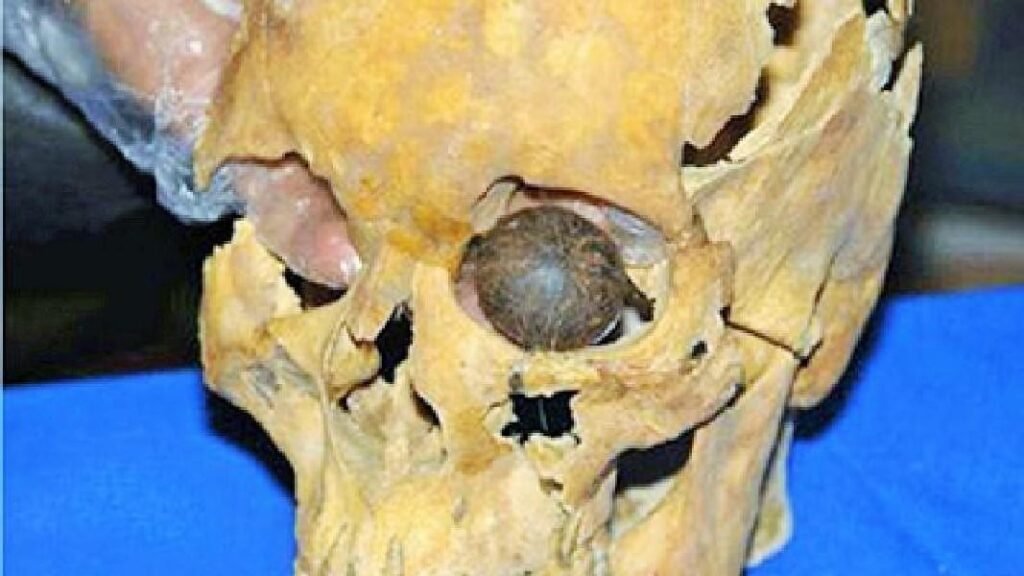
In the Iranian team’s excavations in the Shahr-e Sukhteh of Zabul, a female skeleton was discovered in one of the graves with an artificial eye in her eye socket. The first possibility was that, like the Egyptians, they placed beads in the eyes of the dead, which did not seem right. This was not the case for the rest of the bodies of the burnt city, and the Egyptians also placed beads in both eyes, while in this skeleton, the bead was placed in only one eye.
Also, the evidence showed that the woman’s skull was damaged and the part of the head with an artificial eye was infected and diseased. This evidence led the researchers to the conclusion that most likely, the woman lost her eye due to an accident and then got an artificial eye with the help of doctors and craftsmen.
No valuable artifacts were found in the woman’s grave, indicating that the woman was not a wealthy citizen. This woman was about 180 cm tall, while the other women in the Burnt City were short. It is believed that she was an immigrant who had moved to the burnt city. A person who had heard about the reputation of the doctors of Shahr-i Sokhta made the difficult journey, spent all her wealth, and came to Burnt City to get an artificial eye.
Whatever the story behind the eye, this ball is the first artificial eye in the world, which was made and used with mastery around 3000 BCE. It was synthesized using bitumen paste, some kind of metal, and animal leather, and attached to the head with gold bands. Also, a small and delicate bag was found in the woman’s grave, which seems to have been a sack to store the artificial eye. The precise size of the eye indicates the familiarity of the Burnt City artisans with mathematics and calculation.
A Unique Surgery 4800 Years Ago
Another surprising find in Shahr-e Sukhteh is the remains of an approximately 13-year-old girl. Surgery marks can be seen on the girl’s skull. It seems that the girl was suffering from Hydrocephalus and the doctors of Shahr-e Sukateh used surgical intervention to treat this disease, which is still used in the medical world today. By removing a triangular piece of the skull, they removed the cerebrospinal fluid accumulated in the brain. The method of surgery, the use of anesthesia, and how they controlled the pain and infection, are not very clear. It is considered one of the sealed mysteries of the burnt city.
What is certain is that the sick girl lived about a year after the operation and the traces of recovery and regeneration of the skull bone are evident. This surgery, along with the artificial eye prosthetic found in the burned city, shows a glimpse of the city’s medical progress.
Shahr-e Sukhteh, an Industrial Town
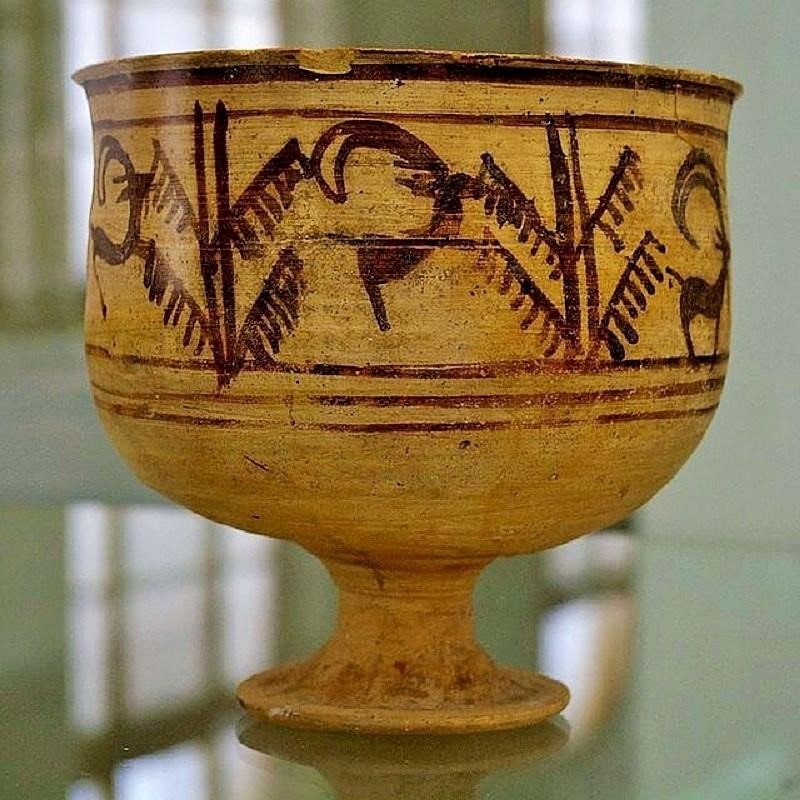
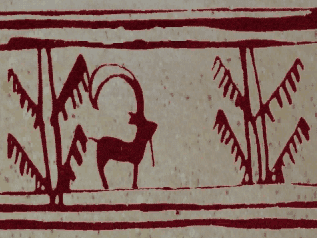
The findings indicate that the city’s economic survival was based on industry. Many merchants came from far away to buy the handicrafts of Shahr-e Sukhteh artisans and helped the businesses thrive.
One of the important and advanced industries of this city was jewelry making. The jewelry makers of this city used to place pieces of lapis lazuli in a sheet of gold and make a combination of gold and precious stones. Making thin sheets and thin strings of gold to craft delicate and beautiful jewelry is one of the unique skills of the jewelers of this country nearly 5 thousand years ago. Among the crafting tools of these artisans, wooden pieces have been found that appear to be rulers with an accuracy of half a millimeter.
Pondering the Meaning of Creation
It is evident that the people of the Shahr-i Sokhta in Zabul had reached a level of material comfort and intellectual progress that they could think about the meaning and philosophy of life and creation. They believed in life after death and considered light sacred. They buried the dead in the direction of sunlight. In this period, human thought experienced growth as they started thinking about something beyond material needs and desires.
Shahr-i Sokhta Graveyard
Shahr-i Sokheta graveyard has an area of about 20 to 25 hectares, which is considered one of the largest cemeteries of the Bronze Age. Seyed Mansour Seyed Sajadi, the head archeologist of the project, considers this cemetery to be a treasure of information due to the preservation of many artifacts and traces of various burial practices.
About ten types of graves have been found in the graveyard. Most are crypt graves. The crypt graves had two parts: the entrance and the burial site. Beside the crypt graves, some graves were simple pits and belonged to the poor.
Different funeral and burial rituals were based on the social class and beliefs of the individual, regardless of age and gender. Graves are not subject to any norm in terms of direction and shape. Most graves hold only one body and the only material used in their construction is adobe.
Food, drinks, artifacts, dishware, and personal items such as cosmetics and work tools were placed next to the body. Sometimes they buried a whole sacrificial animal along with the body. They also put jewelry on women’s graves. Seals were buried along with the bodies of those with authority and power. These seals have been found in many female graves, which shows the important and administrative role of women in the Burnt City. Sometimes there are up to 50 buried artifacts in one grave. In the graves of poor people, there is only water or a bowl of fermented grape juice. They did not bury anything with children under two years old.
No traces of Mithraism have been found in Shahr-i Sokhta, but it is clear that the body was buried facing the sun. For example, if a person was buried in the morning, the person’s face would be facing the sunrise. The bodies were buried in the fetal position. The body was placed on its side in a bent and squatting position. Since different tribes were present in the Burnt City, each of them had a special belief about life after death, which was followed in the burial rituals.
The Fall of Shahr-i Sokhta
According to the conducted research, what caused the end of civilization in this settlement was the natural alteration of water flow and climate changes. This area was humid in the past, with access to adequate water supply and an abundance of trees. Its inhabitants burned wood for fuel. With the loss of vegetation, devastating storms made life difficult. In addition, the decrease in water supply and the increased heat caused the residents to abandon the city.
Ongoing Archeological Excavations in Shahr-i Sokhta
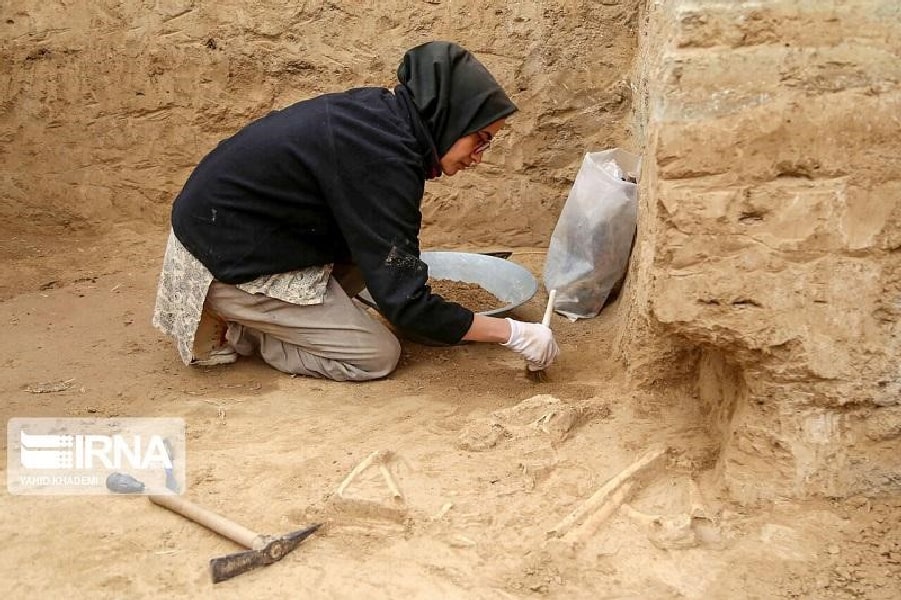
Extensive excavations are underway in the historical hills of Shahr-i Sokhta. From time to time, you can find news of fresh discoveries on this site. It should also be said that carrying out archaeological excavations in this place is not an easy task. The weather in the region is unfavorable. Sandstorms, extreme desert temperatures, and other climate issues are some of the difficulties that archaeologists face there.
Regardless, some experts are researching the food supply of the people of this ancient settlement. They found out that lentils and fish were the main foods of the people of Burnt City. More information about this ancient civilization is yet to be discovered.
Where is the exact location of Shahr-i Sokhta?
Shahr-i Sokhta is located in Sistan and Baluchistan province, about 45 km south of Zabol and 30 km after Mohammad Abad village on Zabul-Zahedan road.
The following directions will take you to Shahr-e Sukhteh:
Frequently Asked Questions About Shahr-e Sokhta
If you did not find the answer to your question here, leave us a comment in the comments section of this post and ask your question. We will answer it as soon as possible.
Why is the Shahr-e Sukhteh of Sistan considered a mysterious site?
What distinguishes this city from other ancient cities is the artifacts discovered there. These objects show the advanced civilization and the different living conditions of the people of this region compared to other Bronze Age cultures.
What does Shahr-e Sukhteh mean and what is its original name?
Shahr-e Sukhteh or Shahr-i Sokhta means the Burned City. Archaeologists have discovered that the city has been burned many times, which led to the death of many inhabitants. The discovered graveyard is proof of this. Despite the discoveries and ongoing excavations, many questions remain unanswered, including the original name of this city.
Was Shahr-e Sukhteh the most advanced city in the Bronze Age?
Based on the discoveries in the excavations, many have called this city the most civilized and advanced ancient city in the world during the Bronze Age. It is interesting to know that this city had a water piping system supplied by the Hirmand River and a sewage system. This has surprised everyone, especially seasoned archaeologists.



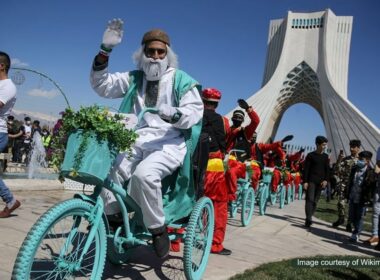

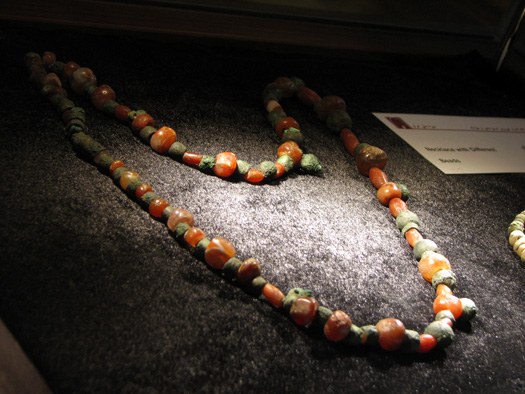
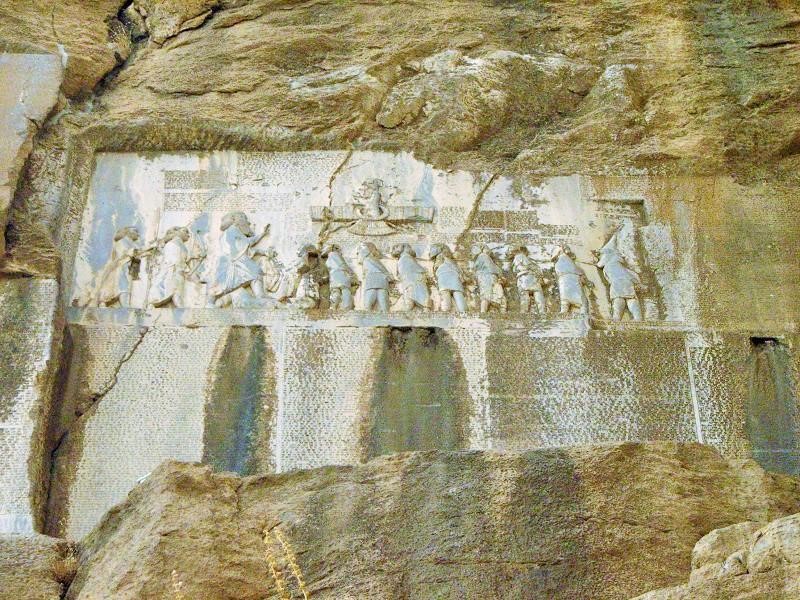






Looks like a very interesting place to visit!
In fact, it is a very interesting archaeological site that could be a perfect place to visit. However, very few tourists travel there as it’s quite out of the main route of international travelers.
Only people with particular interests go away 100s of kilometers from the main route for such visits.